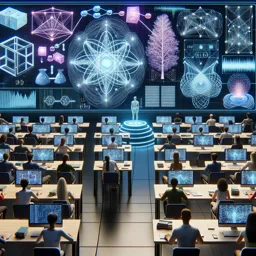What is TensorFlow?
TensorFlow is a powerful open-source library developed by Google for building and deploying machine learning and artificial intelligence (AI) models. It is widely used by researchers, engineers, and developers to create systems capable of understanding complex data, making predictions, and automating tasks that traditionally required human intelligence.
Key Features of TensorFlow
- Flexibility: TensorFlow supports various platforms, from desktops to mobile devices, allowing developers to deploy AI models anywhere.
- High-level APIs: Developers can use easy-to-understand APIs like Keras to build and train models without extensive coding.
- Scalability: TensorFlow handles everything from small-scale applications to large, distributed systems and cloud deployments.
- Visualization: Built-in tools help visualize model structure, performance, and data flow, enabling better debugging and optimization.
How Does TensorFlow Work?
At its core, TensorFlow performs numerical computations using data flow graphs. In these graphs, nodes represent mathematical operations, while edges represent the data (tensors) communicated between them. This design allows for efficient computation on both CPUs and GPUs, facilitating large-scale machine learning tasks.
Typical Applications of TensorFlow
- Image recognition and classification
- Natural language processing, such as translation and sentiment analysis
- Speech recognition
- Predictive analytics
- Reinforcement learning for game AI
TensorFlow’s modular design makes it suitable for diverse industries, including healthcare, finance, retail, and autonomous systems.
Getting Started With TensorFlow
To get started, install TensorFlow using pip:
pip install tensorflowYou can then import it in Python and begin building models. TensorFlow’s comprehensive documentation, tutorials, and community support make it accessible even to beginners in AI and machine learning.
Conclusion
TensorFlow stands out as a versatile and robust platform for driving advancements in artificial intelligence. Its open-source nature, scalability, and ease of use empower individuals and organizations to innovate with intelligent systems, making AI more accessible than ever before.

































